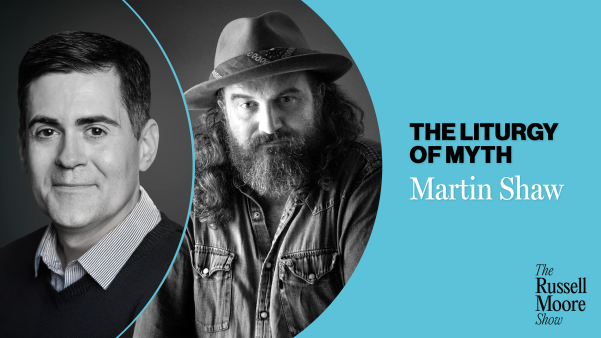Jesus’ own disciples frequently missed what he was doing. James and John wanted preeminent posts in his kingdom, advocating for places of power, prestige, and authority. Jesus responded by essentially telling them they were missing the point. His kingdom didn’t operate like the kingdoms of the nations.
For Elyse Fitzpatrick and Eric Schumacher, the intra-evangelical debates around gender and gender roles in the last few decades seem to repeat the mistaken focus of James and John, concentrating on questions of who gets to be in charge and missing the humble and lowly pattern of power exercised by Jesus. In Jesus and Gender: Living as Sisters and Brothers in Christ, Fitzpatrick and Schumacher attempt to move beyond the decades-old framework of complementarian versus egalitarian when it comes to matters of gender and gender roles in marriage, the church, and society.
Avoiding most of the standard terms that characterize much of this debate, they focus on a “Christic” paradigm, arguing that the gospel and the shape of Jesus’ life, death, resurrection, and ascension show that true power manifests itself in service and that true authority validates itself through self-giving humility. The good news of Jesus shapes everything, including how women and men relate to each other.
Joint authority
In the first three chapters, the authors provide the theological foundations for their approach. Jesus should be at the center of our theory and practice of gender and gender roles, and if we fail to catch the way he reframes power and authority, we’re likely to import a worldly definition of those matters into our lives. Forgetting the centrality of Jesus, they point out, has devastating impacts on marriages and families, in the church, and in society as a whole.
Thanks to our lust for power, abuse and constant power struggles characterize those who fail to grasp the way of Jesus. The remedy for this is to fix our eyes on Jesus, our older brother who calls us his brothers and sisters in the body of Christ. Because of Jesus, women have the status of adopted sons in God’s family and men are part of the bride of Christ. These biblical images are not meant to undermine or dismiss gender but to show that men and women are called and united by Jesus into his new family.
In the next four chapters, Fitzpatrick and Schumacher articulate a Christic view of gender, which they summarize this way: “In Christ, believing men and women are to glorify God by cooperating for the advance of the gospel and imitating Christ in voluntary humiliation, reciprocal benevolence, and mutual flourishing.” As God’s image bearers, men and women are given the creation mandate. As siblings in God’s household, women and men are given the Great Commission and called to encourage and equip one another for the callings God has given us. As the summary above highlights, these tasks and callings are something given to men and women together.
The next three chapters outline more specifically how this Christic view of gender shapes marriage, parenting, and the church. In marriage, husbands and wives are called to freely given service and love. In parenting, children should be raised and trained in Christlike discipleship, not in gender roles (most of which come from broader cultural expectations rather than Scripture). And in the church, men and women are called to exercise joint authority that flows not from gender but from the power and authority of Scripture, which is a power of persuasion, not force.
Finally, the book concludes with a chapter featuring a wide array of stories of women and men who are serving their churches and communities in a variety of avenues and callings. These stories helpfully illustrate the authors’ key point that their focus is not about who gets to be in charge but how men and women are called to serve, using their gifts to build up the church and communicate the love of Christ.
A different practice of power
Jesus and Gender has several strengths. It focuses on the gospel and the Incarnation, taking its cues from what Jesus shows us about what it means to be human. Fitzpatrick and Schumacher relentlessly but rightly point us back to Jesus’ life, death, resurrection, and ascension as a template for how we think and live in relation to authority and power.
Thankfully, they avoid a “Jesus versus the Bible” approach that some employ to avoid the whole counsel of Scripture. Rather, they emphasize that Scripture can and should bind our consciences. Yet they also point out that some supposedly “biblical” frameworks for gender go beyond Scripture, importing cultural gender stereotypes into the discussion. They repeatedly call out this mistake—and rightly so, because when people wrongly teach cultural gender stereotypes as biblical, they create disorientation and distrust regarding matters on which Scripture is firm and clear.
A further strength of the book is its concrete examples of real-life ministry, including firsthand testimonies from men and women serving in a variety of ways. These models are a great help, given that some of the authors’ terminology can be quite general. For instance, they speak (as quoted above) of our call as brothers and sisters to walk the path of “voluntary humiliation, reciprocal benevolence, and mutual flourishing.” Those are good words, of course, but they need flesh on them, which is precisely why the embodied examples from varied walks and stages of life are so helpful. The saints who share their stories are clearly sisters and brothers who are not concerned about who’s in charge. Instead, they’re asking, “How can I serve?”
Some readers, however, might be frustrated by the authors’ lack of a firm answer on specific questions of male and female leadership within the church. For Fitzpatrick and Schumacher, however, that is not an accidental oversight but an intentional omission. Instead, they emphasize that questions of ordination and leadership should be decided “in local church contexts where members freely choose to follow Christ as their conscience and the light of Scripture is made known to them.”
In this way, the authors align with those who see questions of gender and leadership as second-tier issues on which churches can agree to disagree. (In my circles, this includes newly formed denominations and networks like the Alliance of Reformed Churches and the Kingdom Network.) This stance is unlikely to satisfy either hard-line complementarians or hard-line egalitarians. But it fits with the authors’ strategy, which prioritizes using our gifts to serve Christ’s body above any preoccupation with power and prestige.
Although the book has many commendable features, one omission seems a bit glaring. With a title like Jesus and Gender, I expected to find some level of engagement not only with unhelpful biblical gender stereotypes that overplay male-female difference but also with our broader culture’s unhelpful attempt to erase gender or reduce it to nothing more than a social construct. This book addresses questions provoked by the intra-evangelical gender debates, which assume the basic categories of male and female, but it doesn’t address questions provoked by contemporary gender theory.
I understand that the book seems targeted mainly at readers coming from more conservative church circles, who are unlikely to deny that God created us male and female. Still, the authors could have done more to address problematic views and practices in the broader culture. Without a well-defined view of gender difference, it can be easy to make the pendulum swing from the inflexible and unbiblical cultural stereotypes of conservatives to the more progressive notion that gender itself is completely malleable and entirely subject to individual choice.
Despite this omission, however, Jesus and Gender remains a helpful resource for moving us beyond the battles of James and John to the way of Jesus. The Christic vision of Fitzpatrick and Schumacher points us to a different practice of power and authority both within and beyond the walls of the church. In a world of antagonisms, the church needs to recover what it means to be a family of women and men joined in voluntary humiliation, focused on reciprocal benevolence, and committed to mutual flourishing. In a power-hungry world, that path of humble service would be a stark testimony to the truth of the One who came to serve.
Branson Parler is director of theological education and professor of theology at The Foundry. He is the author of a forthcoming book, Every Body’s Story: 6 Myths About Sex and the Gospel Truth About Marriage and Singleness.










